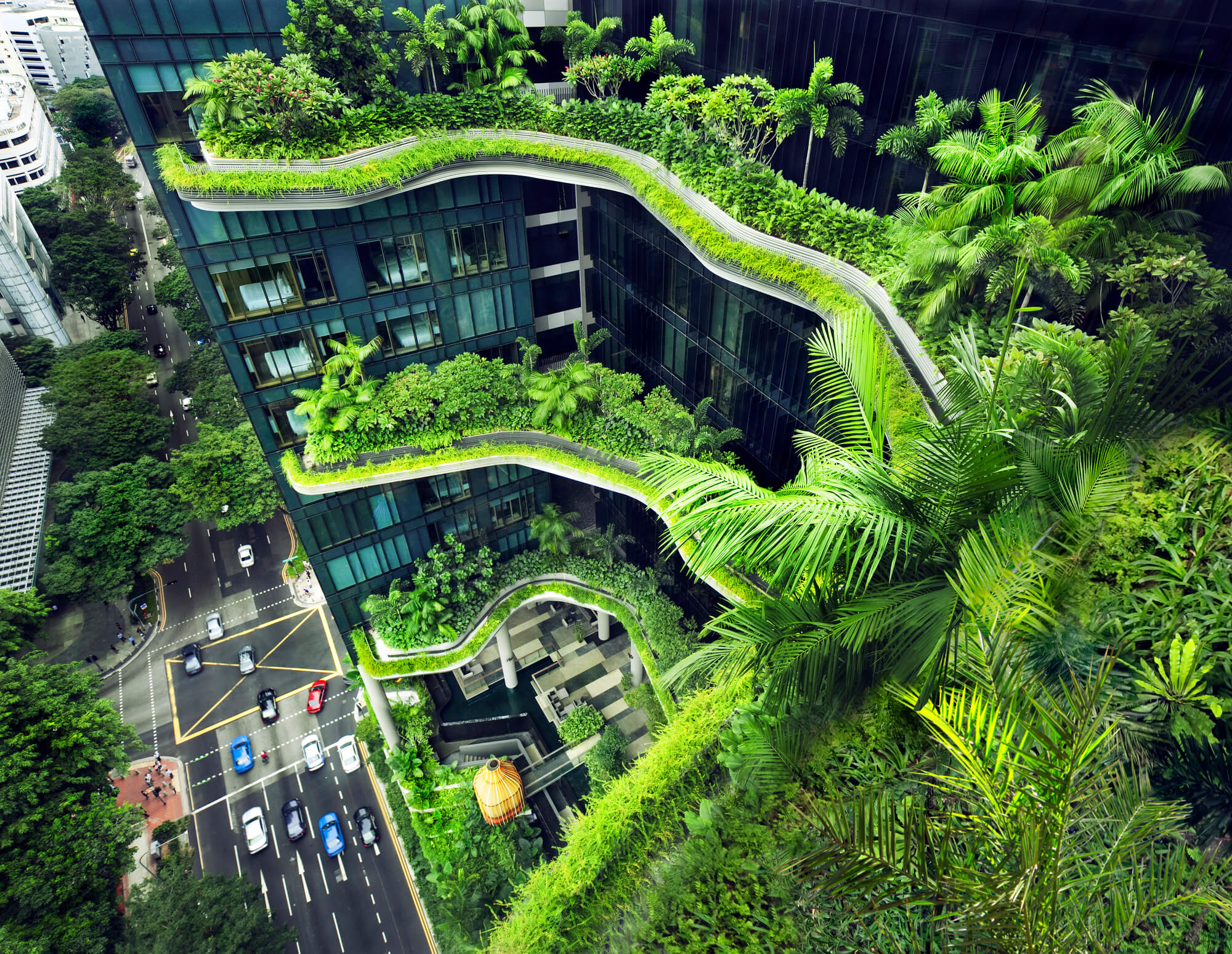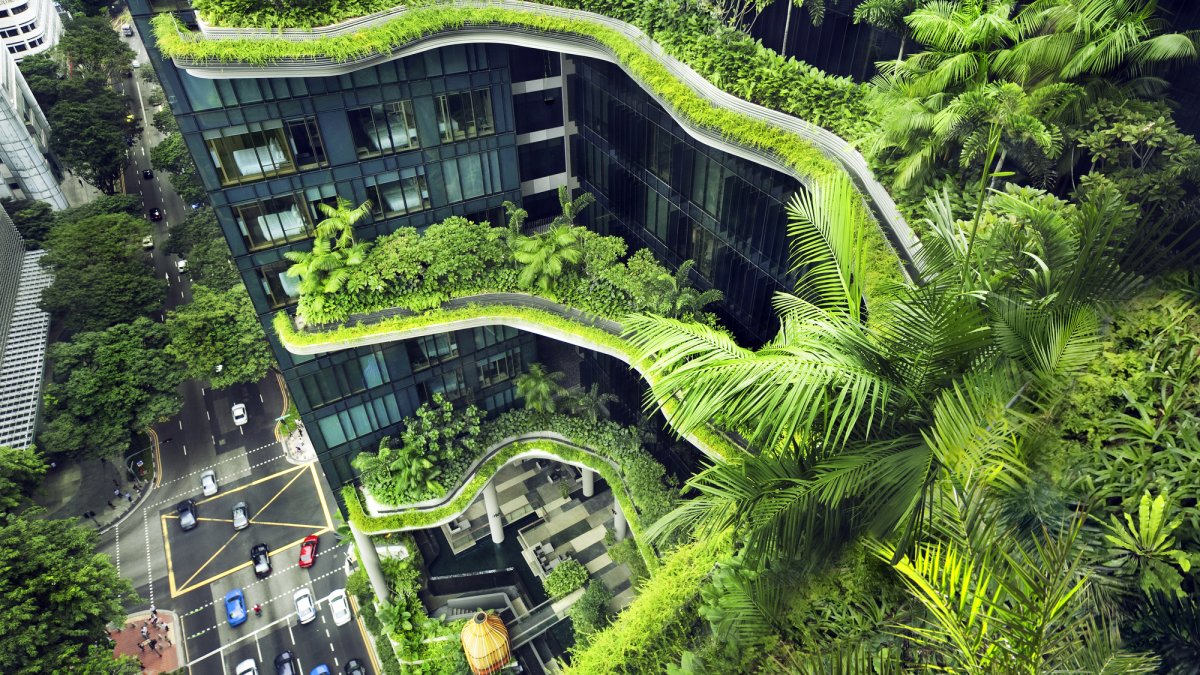
Climate change has become a major concern in recent years. This has led governments and organizations to take note of the environmental impact of their activities. Various industries—from retail and entertainment to finance and transport—have gathered together to re-look at how they operate and make critical changes to minimize adverse effects. As a result, innovative green strategies have evolved and are adopted by almost every sector.
The construction industry has also introduced new concepts to curb its negative climatic impact. One such important approach is the concept of green architecture. But how can you implement it to achieve effective results? Let’s explore.
What Is Green Architecture?
Green Architecture involves specific concepts and approaches to help minimize or prevent adverse environmental effects that often result from the construction of buildings and homes.
It is common knowledge that buildings have a significant carbon footprint, both during construction and later, as they house residential or commercial activities. For example, a building consumes large amounts of energy during its construction, especially for operating tools and equipment. Once it is complete, its residence will continue to use energy in the form of lighting and equipment, air conditioning, and heating. There is also water and material use, harmful waste disposal, and toxic emissions. All these could result in substantial climatic damage when combined in the long term.
Green architecture takes note of all these and offers sustainable solutions through climate-friendly building designs. It integrates technology, innovation, and new perspectives to deliver an aesthetically pleasing, cost-effective construction output that produces a lower carbon footprint.
Of course, green architecture is still at an early stage, and finding experts for advice and guidance is not always easy. Leadar and LinkedIn are excellent starting points for finding experienced professionals in this field. Industry directories and your local business chambers could also help connect you with local professionals.
Benefits of Green Construction
Inarguably, the construction industry has a massive impact on the world’s carbon footprint. It is responsible for 40% of global CO2 emissions and 36% of energy use. Water usage and the strain on natural resources due to industry activities are equally alarming. This is why introducing green architectural concepts is timely and essential.
But what are the key benefits of implementing green architecture in construction? The obvious impact is on the environment. Individuals, businesses, and organizations can dramatically reduce the environmental impact of their activities with the use of green buildings.
But the ultimate beneficiaries of a healthy planet are those inhabiting it. Breathable air, a better climate, and preserved natural resources are invaluable assets for future generations. With a well-balanced ecosystem, you can also avoid many climate-related disruptions, from unexpected floods to prolonged droughts, that threaten human existence today.
There are other advantages to adopting green architecture. It offers many cost benefits in the long term. For instance, using less water and energy can lead to significant savings in energy bills.
Moreover, by taking proactive action to integrate forward-thinking concepts, such as this, you are better prepared to align with and benefit from new laws and regulations that are bound to come into effect in the near future.
Implementing Green Architecture in the Construction Industry
Architects often integrate various design elements to improve a building’s environmental performance. These can include using natural lighting with large glass panels, enhancing ventilation with open spaces, and incorporating greenery both within and outside the structure to create more harmony and balance with its natural surroundings.
But how can you implement green architectural concepts during the construction phase? You can do this in several ways.
Material selection and use
Using renewable, reusable, or recyclable materials is crucial for green construction. Choosing green building materials, such as reclaimed wood, hempcrete, bamboo, cork, recycled steel, and precast concrete, is increasingly becoming popular over harmful synthetic alternatives. As more people adopt eco-friendly construction methods, the demand for these green materials is growing steadily, with the market expected to reach USD 610 billion by 2028.
These materials have significant advantages besides their positive environmental impact. Bamboo, for instance, is lightweight, affordable, and can resist pests. It is also excellent to add a unique aesthetic flair to a building, which makes it popular as part of wall panels, floors, and decorative elements.
Energy usage
You can minimize energy usage during construction in various ways. For example, recycled timber can help significantly lower a building’s energy footprint. At the same time, energy-efficient techniques and solutions could further help achieve this. Roofing materials, windows, and insulation panels can all help reduce heat loss once the building is occupied for residential, commercial, or industrial activities.
Installing solar panels is another option to consider. It could eliminate a building’s contribution to fossil fuel-based energy generation by powering all its energy needs with solar power.
Water usage
Water is a limited natural resource. So, preserving it with efficient use in buildings is critical. Today, water neutrality is an important part of green architecture. It aims to achieve a net-zero increase in the amount of water a building uses compared with the total usage in the area before its construction.
Solutions like low-flow toilets and faucets will go a long way in minimizing water consumption. Reusing and preserving water through rainwater harvesting is another popular method. In addition, recycling, reusing, and minimizing the use of water during the construction phase is also essential.
Technology integration
Incorporating green construction technology into planning, implementing, and improving your construction activities contributes to minimizing a building’s carbon footprint.
The market for green tech solutions in construction reached a staggering USD 2.2 billion in 2022. Clearly, the demand is rising—no doubt a result of the phenomenal improvements it stands to offer.
These tech suites could range from sophisticated energy tracking systems to building information modeling platforms. Such innovative technologies allow you to track the entire designing and construction process of a building and equip its occupants to minimize their environmental impact using advanced monitoring solutions.
In Conclusion
The demand for construction will continue to grow in the years to come with the rise of the world population, living standards, and economic activities. This means more houses, office buildings, plants, and manufacturing facilities, which will continue to drain our planet’s environment and natural resources. So, sustainable approaches, such as green architecture, are critical to minimize and curb the ensuing adverse effects.
Steven Bennett
Related posts
Stay connected
Today's pick
- Safety Essentials Every CNC Operator Should Follow DailyCNC machining demands precision, consistency, and discipline—but above all, it requires strict attention to safety. Whether you’re working with mills, lathes, routers, or grinders, every machine has the potential to cause serious injury if mishandled. That’s why CNC operators must follow safety protocols daily, no... The post Safety Essentials Every CNC Operator Should Follow Daily […]

